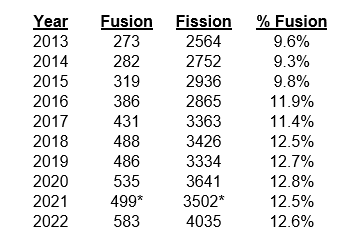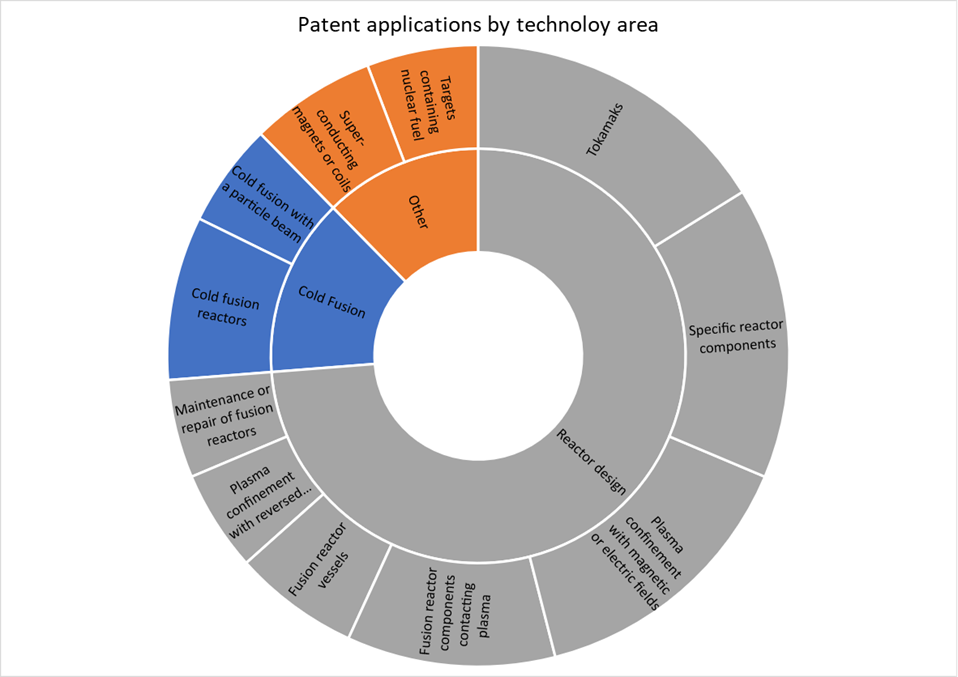22/11/2023
This is the second article of our mini-series ‘Powering Tomorrow: Intellectual Property & Nuclear in the Age of Net Zero’ where our specialists delve into the role of intellectual property within the nuclear sphere, looking at developments in traditional nuclear power as the industry strives to adapt to the sustainable energy landscape of the future, and at the potentially revolutionary impact of nuclear fusion.
Powering Towards the Fusion Era
Nuclear fusion is regularly touted as the holy grail of sustainable clean energy: it produces no carbon emissions, uses readily available fuel, and produces vastly more energy per unit of fuel. But with everything there is balance: unlocking this stellar power involves colossal resources and technical complexity. For the last few decades, only multi-governmental research projects such as JET or ITER have been able to drive research and development in nuclear fusion technologies, and progress has been hard-won.
But there are increasing signs that the fusion age is arriving. Some say it’s already here. The past 12 months have been dramatic, with several significant milestones being met. Most significantly, in December 2022, a fusion reaction on Earth released more energy than it consumed. These results were replicated, and improved upon, in June 2023. For the first time nuclear fusion proved that it could be a viable and sustainable energy source.
Which begs the question: when will we see the benefit?
The day when our homes are powered by nuclear fusion may be closer than many people realise. In a recent survey[1], 65% of surveyed fusion companies predicted that the first fusion plant will deliver electricity to the grid before 2035, with most expecting commercial viability by 2040. This confidence is at least partially based in research and development in fusion technologies moving away from multi-national experiments and towards smaller, more agile, private companies. The total number of private fusion companies has more than quadrupled over the last 5 years, and in the last 12 months $1.4 billion has been invested in the nuclear fusion industry – the vast majority of which was awarded to start-ups. New regulatory frameworks for fusion in the UK and US are also likely to help boost the fusion industry even further.
The influence of these companies is already starting to show in the number of patent filings for fusion technologies, which is a useful barometer for the amount of innovation being undertaken. Our analysis shows that over the last 10 years private companies applied for just over half of all nuclear fusion patent applications, compared to less than a third during the same period 20 years ago.

Historically, relatively few patent applications were filed for fusion technologies as there was little expectation the technology would be commercialised within the 20 year lifetime of the patent. However, the table below shows that the number of published patent applications for fusion technologies has grown steadily over the past 10 years at a higher rate than nuclear fission technologies.

*Patent applications are not usually published for 18 months, so the dip in patent publications in 2021 is likely to have been caused by the Covid-19 pandemic from early 2020 onwards.
While the rate of growth of fusion patent filings is perhaps relatively modest considering the huge influx of new fusion companies in the past 5 years, this is in some ways unsurprising because start-ups typically file relatively few patent applications initially in order to focus on core technologies. The volume of patent filings typically increases after a few years once these companies mature.
The entities that have filed the most patent applications for fusion technologies over the past 10 years are shown in the table below, and reveal an interesting blend of research institutions and well-established private companies.

These are the players who have been shaping the industry over recent decades, and our analysis reveals that their contribution to innovation lies predominantly in reactor design, as shown below. The emergence of many more small companies will no doubt disrupt this landscape in the coming years.

Although there are still many technical challenges to overcome before commercial nuclear fusion becomes a reality, it appears that the private sector is primed to provide the impetus needed to overcome these challenges. It could not be more timely. The ecological problems that humanity currently faces are stark, but for decades fusion technologies have given us a tantalising glimpse of an alternative world where plentiful energy is created with little environmental consequence.
Hopefully, the days of dreaming are now numbered.
Read the next article of Powering Tomorrow: Modular reactors mark renaissance for nuclear patent filings
Read the previous article of Powering Tomorrow: Nuclear’s Behind-the-Scenes Influence
This article is for general information only. Its content is not a statement of the law on any subject and does not constitute advice. Please contact Reddie & Grose LLP for advice before taking any action in reliance on it.




